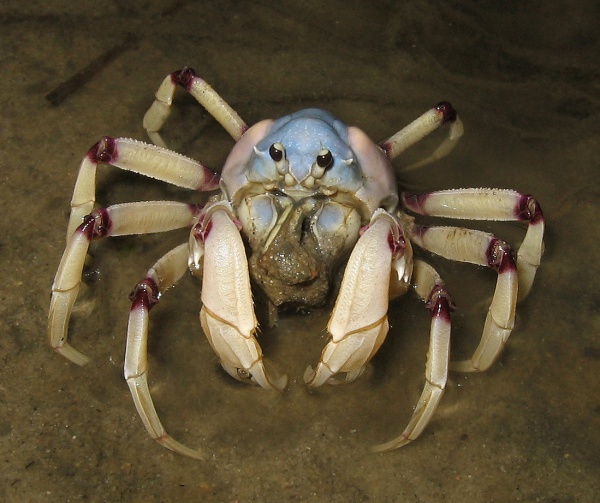Facts About Mictyris longicarpus
Meet the light-blue soldier crab, Mictyris longicarpus, a fascinating little creature that inhabits sandy beaches from the Bay of Bengal to Australia. These crabs are particularly cherished in Australia and are easily identifiable by their blue carapace and white bodies. Despite their small size, they exhibit quite the personality, spending their time sifting through sand for bits of detritus to consume.
One of the most striking features of the light-blue soldier crab is its unique appearance. Imagine a spherical body with a blue carapace, a white body, and purple joints on its legs. Their claws are slender and curve downward, held vertically, and their short eyestalks complement their compact form. Standing upright, they measure about 25 mm across—tiny but impressive!
These crabs are social creatures, particularly the males, who often gather in large groups known as "armies." During low tide, these armies move along the beach in a coordinated fashion before burrowing into the sand to wait for the next low tide.
Mictyris longicarpus inhabits a wide range of locations, including Singapore, the Bay of Bengal, New Caledonia, and various parts of Australia such as Perth, Queensland, New South Wales, and Wilsons Promontory in Victoria.
When it comes to their diet, these crabs are not fussy eaters. They feed on detritus and small organisms like diatoms, gastropod eggs, and nematodes that they find in the sand. However, they must stay vigilant against predators like the straw-necked ibis, Torresian kingfisher, great egret, common toadfish, grapsid crab, ghost crab, and moon snail.
Most of their time is spent buried in the sand, emerging just before low tide. When they surface, they create small hummocks in the sand and then march toward the water in straight lines. They feed by scooping sand into their mouths and leaving behind round pellets of inedible material. After feeding, they dig burrows and engage in social behaviors, including threat displays between males.
Michael Tweedie, a researcher who has studied these crabs, likened their behavior to human societal behaviors. He described Mictyris crabs as "cheerful bohemians" living in crowded conditions and displaying carefree and uninhibited behavior. It’s a charming comparison that offers a glimpse into the lively world of these tiny beach dwellers.
